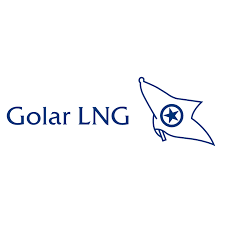Golar is pleased to announce the company’s best-ever quarterly net income of $471.4 million, inclusive of a gain on disposal of Hygo Energy Transition Limited and Golar LNG Partners LP to New Fortress Energy Inc (“NFE”), where we have recorded our NFE shareholding at $35.37/share. The gain on disposal proves that Golar is building shareholder value in our asset portfolio significantly in excess of book values. Golar will seek to continue to simplify its group structure to crystalize value.
On July 20, 2021 we concluded an agreement to increase capacity utilization for the FLNG Hilli Episeyo (“Hilli”), unlocking embedded value by utilizing more of Hilli’s 2.4 million tons of liquefaction capacity. Adding to our Brent oil exposure, the innovative TTF1 linked tolling fee for the incremental volumes delivers on our announced strategy to increase our upstream gas exposure. Based on TTF1 forward prices at the time of announcement and assuming Perenco exercise their option for an incremental 0.4 million tons/year from 2023-2026, the increase in capacity utilization will add around $113 million of incremental earnings backlog1 for Hilli on TTF1 forward curves, or $373 million if the August 6, 2021 spot TTF1 price is assumed to prevail over the same timeframe. The incremental capacity utilization will require no capital expenditure from Golar and minimal adjustments to operating costs, hence almost all cash generated from the increased utilization will be free cash flow1, of which Golar has an 86.9% economic interest. The increase in oil prices has also increased Golar’s earnings from Hilli through the Brent oil related tariff. Hilli is generating an incremental $3.0 million of Adjusted EBITDA for every US dollar the Brent oil price is above $60/ barrel, of which Golar has an 89.1% economic interest.
Further progress has been made on Golar’s announced initiative to increase its gas price exposure by using our FLNG technology to increase our presence upstream in the LNG value chain. We have expanded our upstream team and are currently exploring several fields already producing associated gas, as well as stranded gas opportunities.
On the tolling side of our FLNG business we continue to work with existing and prospective clients on attractive growth projects. These are significant infrastructure investments for our clients that require, amongst other prerequisites, regulatory approvals and supporting infrastructure. These, rather than construction of the FLNG itself, are often the key drivers of a project timeline. The increasing focus on ESG, where gas is seen as a cleaner energy source, together with current and forward commodity prices are however helping speed up upstream developments. Specific commercial and technical discussions have taken place with an existing client for use of a five million ton Golar Mark III new building design.
The shipping business also benefits from higher gas prices and regional price differences. Longer-term employment opportunities at attractive rates are now available. Golar recently fixed one of its vessels for five years. Having completed the sale of Hygo Energy Transition Limited (“Hygo”) and Golar LNG Partners LP (“Golar Partners”), separating the shipping and FLNG businesses represents the final step in Golar’s group simplification process. The announced $102 million reduction in debt in return for an upfront payment of $60 million in respect of four ships, increasing LNG asset values, stronger rates, few publicly listed LNG shipping pure plays, increasing spot freight exposure, and longer-term structural factors increasingly support the attractiveness of shipping as a standalone business.
Golar expects a material improvement in cash generation over the next two years based on the strong trend seen in the LNG shipping market, the increased utilization of Hilli, the higher oil and gas price environment and the commencement of the Gimi contract in 2023. We see great opportunities to use Golar’s unique FLNG technology and operational track record to create significant shareholder value in the years to come. We believe that this momentum, which is underpinned by higher LNG prices, is fundamentally supported by LNGs role as a transition fuel, with its substantial environmental benefits in reducing CO2, SOX and NOX emissions versus coal and oil.
Source: Hellenic Shipping News






